In a case that could have come straight from the pages of a medical thriller, Italy is investigating a mysterious epidemic among former professional footballers, dozens of whom have been killed by a disease that paralyses its victims.
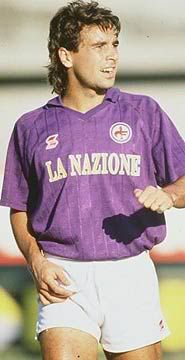 The latest to be stricken is Stefano Borgonovo, a 44-year-old former striker for AC Milan. His announcement that he was suffering from motor neurone disease (MND) was made from a wheelchair with a computer-generated voice and has chilled a nation of football fans who are used to considering players as idols rather than martyrs.
The latest to be stricken is Stefano Borgonovo, a 44-year-old former striker for AC Milan. His announcement that he was suffering from motor neurone disease (MND) was made from a wheelchair with a computer-generated voice and has chilled a nation of football fans who are used to considering players as idols rather than martyrs.
A climate of fear and suspicion hangs over the stadiums. According to one theory, the incurable disease might be linked to pesticides used on football pitches. Others suggest it could be a result of doping or physical injuries from tackles or repeatedly heading the ball.
“The truth is, we just don’t know,” said Adriano Chio, a neurologist and Italy’s foremost expert on the condition, which is known in America as Lou Gehrig’s disease after an American baseball player who died of it in 1941. Chio’s research has shown that professional footballers in Italy are seven times more likely to develop motor neurone disease than others. Midfielders seem particularly vulnerable, perhaps because they are tackled more than other players.
“It is very curious,” said Christopher Shaw, professor of neurology at King’s College London. “There’s been a suspicion for a long time that sportsmen are susceptible.”
Raffaele Guariniello, a magistrate from Turin, enlisted Chio to do an epidemiological survey after his own investigation into a high incidence of cancer and heart problems in Italy’s premier league exposed the presence of an even more sinister scourge among the ranks of the retired players.
He discovered that 41 of them had suffered lingering deaths since 1973 from MND, which destroys the body’s motor nerves, eventually resulting in paralysis. Among the victims were Gianluca Signorini, a former captain of Genoa, who died in 2002 at the age of 42, and Adriano Lombardi, a former Como midfielder who died last year, aged 62.
Having survived with the disease for more than 40 years, Stephen Hawking, the astrophysicist, is a rare exception: most patients die within five years of their diagnosis. According to Paul Wicks, a British expert on the condition, doctors cite it as “the one they would not want to get”.
Why Italian footballers should be so vulnerable is baffling the experts.
“Some say it could be due to doping, but if that’s the case then why aren’t other sports similarly affected?” said Paolo Zeppilli, the Italian national team’s doctor. Meanwhile, Guariniello said that inquiries had been made about cycling, basketball and volleyball, but in those sports “not a single case emerged”.
Other European countries, including Britain, are taking note. Spain says it knows of no cases among its footballers and French doctors also were unaware of any link between football and the disease, but note that mysterious “clusters” of sufferers have occurred at different times in different parts of the world.
“In Chicago 11 victims were found in the same building and we have never even begun to understand why,” said Vincent Meininger, one of France’s leading neurologists.
Wicks, a neuro-psychologist who runs PatientsLikeMe, an online support group for people suffering from a number of neurological conditions including MND and Parkinson’s disease, believes that there may be an “athletic gene” that makes people more vulnerable. He said an American study had found that a disproportionate number of sufferers had played sports at university level. “It is probably a combination of genetic predisposition and environmental factors,” he said.
The Italian magistrate, whose interest sprang from an inquiry into illegal doping in the country’s top league – Serie A – in the late 1990s, has ordered stadium groundsmen to be questioned about pesticides used over the past 50 years.
He has sent investigators to victims’ bedsides to reconstruct their careers with a special emphasis on the injuries they might have sustained, the drugs they took and the fields they played on. Italian players are understandably concerned.
“If you look at the statistics for the number of players affected, there is reason to be worried,” said Fabio Cannavaro, the Italy and Real Madrid defender.
Borgonovo’s plight has moved the nation. The Dutch former star Ruud Gullit, his old teammate, was among the big names who turned out for a friendly match between Fiorentina and AC Milan to raise money for research. Borgonovo, who has set up a foundation to support research into MND, watched from his wheelchair.
“I want to find the money for researchers to find the penicillin of 2008,” he said.
He, for one, does not blame Italy’s favourite game for his plight. “I think it is down to a genetic malformation,” he told an Italian newspaper through a computer that turns his blinks into words, a lengthy and frustrating process.
“Leave football alone,” he added. “If I could go back, I’d put my boots back on and score a 90th-minute goal against Juventus.”
The Italian football federation donated €150,000 (£122,000) out of the revenue from last month’s World Cup qualifier against Montenegro to help to fund a taskforce of scientists in the investigation.
Some players have suggested donating 1% of their salaries to finance research, an idea that will be debated by their union. For once, nobody is grumbling about what they earn.
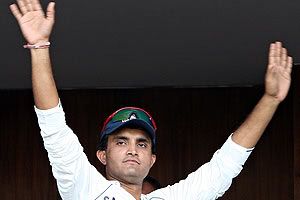
 The latest to be stricken is Stefano Borgonovo, a 44-year-old former striker for AC Milan. His announcement that he was suffering from motor neurone disease (MND) was made from a wheelchair with a computer-generated voice and has chilled a nation of football fans who are used to considering players as idols rather than martyrs.
The latest to be stricken is Stefano Borgonovo, a 44-year-old former striker for AC Milan. His announcement that he was suffering from motor neurone disease (MND) was made from a wheelchair with a computer-generated voice and has chilled a nation of football fans who are used to considering players as idols rather than martyrs.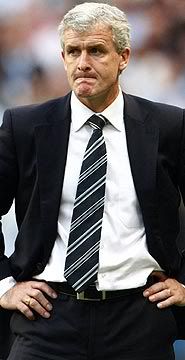
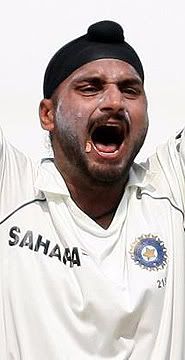 Singh (4-64) and Amit Mishra (3-27) destroyed the Australian battling line-up as the tourists collapsed from 111-2 at lunch to 209 all out.
Singh (4-64) and Amit Mishra (3-27) destroyed the Australian battling line-up as the tourists collapsed from 111-2 at lunch to 209 all out.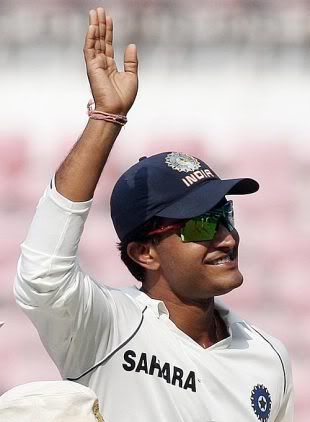 image has gone up immensely, especially while touring,” Ganguly said. “We were always termed as soft when we travelled. I think that has changed considerably. At the present moment India are a formidable side home and away.
image has gone up immensely, especially while touring,” Ganguly said. “We were always termed as soft when we travelled. I think that has changed considerably. At the present moment India are a formidable side home and away.